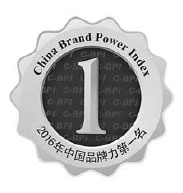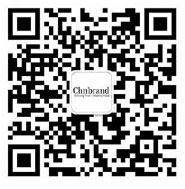Chnbrand issues 2016 consumer survey report
Chinese consumers are more apt to remember brands
Chinese consumers were able to remember more brand names, both international and domestic, than they did in the previous year, especially with products related to the environment and healthcare, such as air purifiers and vitamin supplements, as well as baby care.
Chnbrand, a Beijing-based organization that evaluates brands, released the 2016 China Brand Power Index, or C-BPI, on Friday.
The 2016 research surveyed Chinese consumers from Mar 1, 2015, to Feb 29, 2016, across 33 cities in China. Face-to-face interviews were conducted with 16,440 respondents aged 15 to 60, whose age, gender and income were selected randomly, with questions about 149 product and service sectors and more than 5,800 major brands.
Researchers asked consumers for their feedback on products and services they have used and which brands they most prefer.
They found that consumers were able to remember an average of 5.2 brands within a sector, a year-on-year rise of about 53 percent, from 3.4 brands in the previous report.
Among the top brands in the 149 sectors surveyed, 67.1 percent were Chinese brands, a similar finding to the previous report's result. Among those most popular Chinese brands, Guangdong accounted for 30 percent of them, followed by Beijing with 20 percent.
Among international brands, 53.1 percent were from the United States, followed by Japan with 14.3 percent and South Korea with 8.2 percent.
Despite consumers' increasing affinity to a greater variety of brands, the market share of the top three brands in each sector rose from 53.6 percent in the 2014 C-BPI to 61.8 percent in this year's report. Key brands, especially in the services and durable goods categories, consolidated their advantages in the market, the 2016 report said.
Awareness of brands is not enough to drive consumers to buy products and services, the report explained, adding that the most important element is the consumer-brand relationship.
Sector breakdown
In the services sector, 89 percent of the top brands were Chinese, four percentage points higher than in the 2015 report.
In the durable goods category, Chinese brands accounted for 70 percent of the top brands in the information and communications sectors as well as in household goods. The ranking of Shenzhen-based Huawei Technologies Co Ltd in the mobile phones sector rose from the fifth in 2015 to the second.
In past reports, Chinese brands did not perform well in the fast-moving consumer goods category, especially in daily-use commodities. This year was no exception, with domestic brands accounting for only 22 percent of the top daily-use commodity brands surveyed, down six percentage points from the 2015 report.
Better marketing and communications would lead to greater success for fast-moving consumer goods brands, the report suggested. Top brands in this field this year included Starbucks (chain cafes), Orion (pies), Safeguard (soap) and Comfort (fabric softener).
Deeper analysis
In its 2016 C-BPI report, Chnbrand continued its efforts to make more in-depth analysis concerning the gap between first- and second-ranked brands. A 100+ point gap between first and second place meant a "sharp" competitive edge and a gap below 50 points represented a "weak" one.
Among the 149 top brands, 26 percent had sharp competitive edges, with Internet services brands exhibiting outstanding performances. Alipay (third-party online payment) had 433.7 more points than the second-ranked brand in the field. Scores of Didi (tailored taxi service), Baidu (search engines) and Vip.com (sales websites) were all at least 200 points higher than the second-ranked brands.
Several top brands in the fast-moving consumer goods category also had sharp competitive edges, such as Master Kong (instant noodles), Nestle (instant coffee), LOCK&LOCK (food containers), Dove (chocolate) and Huiyuan (100-percent pure fruit juice).
Top brands that had weak competitive edges fell into two areas. One had high brand power scores, including Dulux (wall paint), Suning (home appliances centers) and Great Wall (engine and lubricant oils). The other had relatively low scores on brand power, such as Kungfu (Chinese fast-food restaurant chains), 7-Eleven (convenience chainstores) and New World (chain department stores).
Golden Brands
In the 2016 C-BPI report, 57 top brands held their No 1 places for at least five consecutive times and were labeled the "2016 C-BPI Golden Brands". Among them, 28 brands were in the fast-moving consumer goods category, such as Bluemoon (liquid soap and laundry detergent), Mengniu (yogurt) and Great Wall (engine and lubricant oils).
In the durable goods category, there were 16 Golden Brands, including Aima (electric bicycles), Galanz (microwave ovens) and Michelin (auto tires).
In the services sector, 13 Golden Brands like PingAn (auto insurance) and Sina (portal websites) dominated the leading places for five or six years.
In the 138 sectors that the C-BPI examined in the past two years, 25 sectors saw a change of the top brands, accounting for 18.1 percent. Quik, top brand of convenience chainstores in the previous four reports, was overtaken by 7-Eleven in the 2016 C-BPI report.
Kungfu replaced Yonghe King and became the top brand of Chinese fast-food restaurant chains in the 2016 C-BPI; Yili replaced Mengniu to become the top ice cream brand in this year's C-BPI.
The C-BPI evaluation system hopes to help consumers make better choices and companies improve their brand management systems, the 2016 report said. The system has been supported by a special fund launched by the Ministry of Industry and Information Technology for years and the first survey report was released in April 2011.
For more information, visit www.chn-brand.org, www.chn-brand.org/c-bpi or contact 86-10-62250811. The publication of graphics and charts from the C-BPI reports should be authorized with Chnbrand's official confirmation letter. All research information is not allowed to be used for advertisement and marketing purposes.
songmengxing@chinadaily.com.cn


(China Daily 04/11/2016 page14)


















